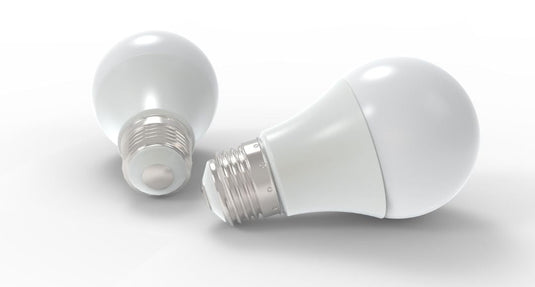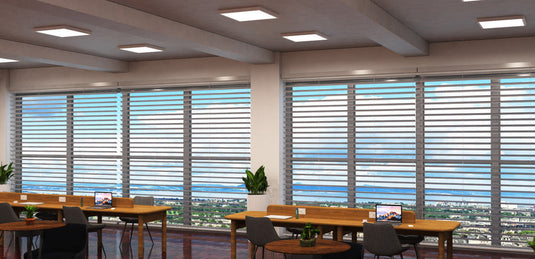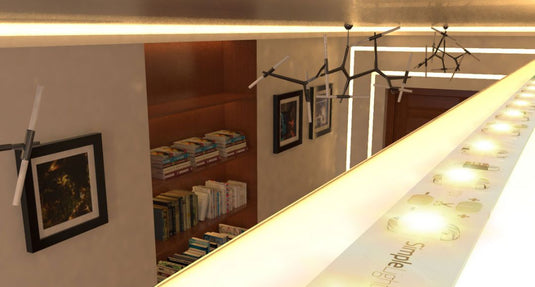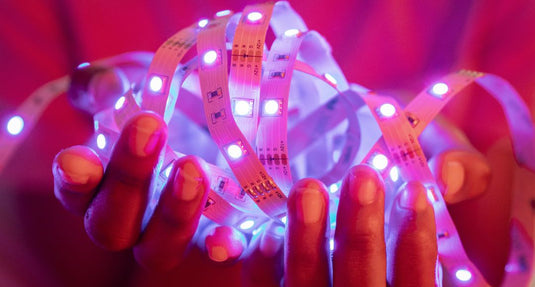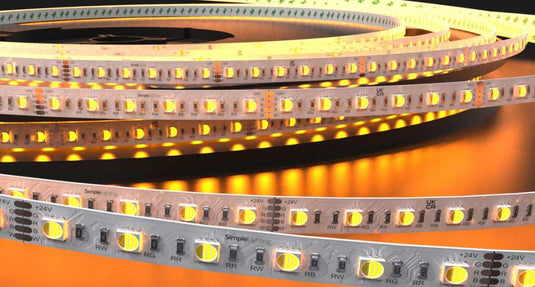LED light bulbs are an eco-friendly, energy-efficient and long-lasting alternative to incandescent light bulbs. Using a significantly less amount of energy compared to a traditional filament light, LED bulbs don’t overheat thanks to their heat sink feature and aren’t classed as toxic or hazardous by law.
Among the list of additional benefits that come with LED light bulbs, the bulbs we provide for our customers also have a lifespan of 30,000 hours, which is one of the reasons they’ve obtained such high reviews.
If you’re wanting to implement more eco-conscious decisions into your home life, read on to find out how LED light bulbs work and why you should make the switch from your traditional incandescent bulbs to LED.
What Is an LED Light Bulb?
Instead of emitting light from a vacuum, which is what a regular incandescent light bulb does, an LED bulb is solid-state lighting, meaning it produces light when an electric current passes through it instead.
LEDs (light emitting diodes) are durable, low cost and provide excellent illumination no matter the temperature, something traditional light solutions struggle with. Because less electricity is required to power LED light bulbs, it won’t cost you as much money compared to having incandescent bulbs throughout your home.
As time goes on, caring for our planet is essential. LED light bulbs positively contribute to environmental welfare, which makes them a great alternative to other light bulbs that contribute to landfills. The main reason why LED light bulbs have proven to be so popular is that they don’t need to be replaced as regularly, ultimately meaning less need to be manufactured.
Are LED Light Bulbs Safe?
With energy-saving features and an extensive lifetime, it’s hard to think of one disadvantage of LED light bulbs, but how safe are they to have in your home or commercial space?
After plenty of research, LED light bulbs have not been considered to be hazardous or toxic. LED light bulbs can be disposed of in regular landfills and have zero traces of dangerous chemical elements such as mercury, which can commonly be found in traditional incandescent light bulbs.
Although incandescent bulbs only contain a small percentage of mercury, the effects can be detrimental to your health if the toxic elements are released. The most common way that mercury could potentially be released is by the bulb shattering. One of the main bonuses of purchasing LED light bulbs is having the reassurance of knowing they’re safe to have in your living space.
Safety can often be overlooked when it comes to light bulbs. LED lighting is safer in general, and can be seen as one of its biggest advantages. Because LED light bulbs operate on a low voltage electrical system, they’re much safer in the event of an emergency, such as a fire.
How LED Light Bulbs Operate
Through the electroluminescence principle, LED light bulbs have the ability to emit light by passing electricity through semiconducting materials that are known as diodes, which encourage the emittance of photons - which essentially means light.
An LED light bulb (a semiconductor device) emits light frequencies when a volt is applied, and when electrons shift inside its structure, a signal is sent to illuminate. Being incorporated into light fixtures across homes all over the world since they were designed in 1962, LED light bulbs are hassle-free and easy to install.
As technology has advanced, many LED light bulbs have new, modern-day features such as dimming compatibility and an array of colour options.
Do Dimmable LED Light Bulbs Work Differently from Regular LED Light Bulbs?
Many homeowners find bright illumination to be intrusive and overwhelming. Having too bright of a light in your home can cause an intimidating atmosphere, resulting in most people opting for LED dimmable light bulbs - but how do dimmable light bulbs work?
Dimmers work by chopping parts of the AC voltage out - meaning only a few parts of the waveform are able to pass through. The more frequently the waveform is postponed, the more your light bulb will dim. Making sure you have a compatible dimmer switch for your light bulb is crucial if you want to dim your lights accordingly.
Although not all LED light bulbs have a dimmable feature, finding out whether they can be dimmed is simple. At LED Supplier, we’ve made it easier than ever to find out whether the bulb you’ve chosen is able to be dimmed, by providing feature listings across all our products.
Being able to dim LED-operated light fixtures, such as lamps or downlights, has a multitude of energy-saving benefits. The lower your light bulb is dimmed, the lower amount of energy you’ll be using. As well as giving you full control over your lighting, LED dimmable light bulbs have an even longer lifespan.
At LED Supplier, our bulbs come in a selection of colours including warm white, natural white and cool white.
LED Light Bulbs at LED Supplier
LED Supplier has a wide range of high-quality, reliable bulbs. We provide an array of lighting with LED technology, whether it’s LED strip lights, kitchen lights or LED accessories such as drivers and dimmer switches, LED Supplier has it all.
All our LED light bulbs have superior brightness due to their high level of lumens. As well as being a reliable source of light, our bulbs have a wide beam angle and we’re manufactured with quality in mind. With a variation of LED light bulbs available, visit our website to shop our products today.
